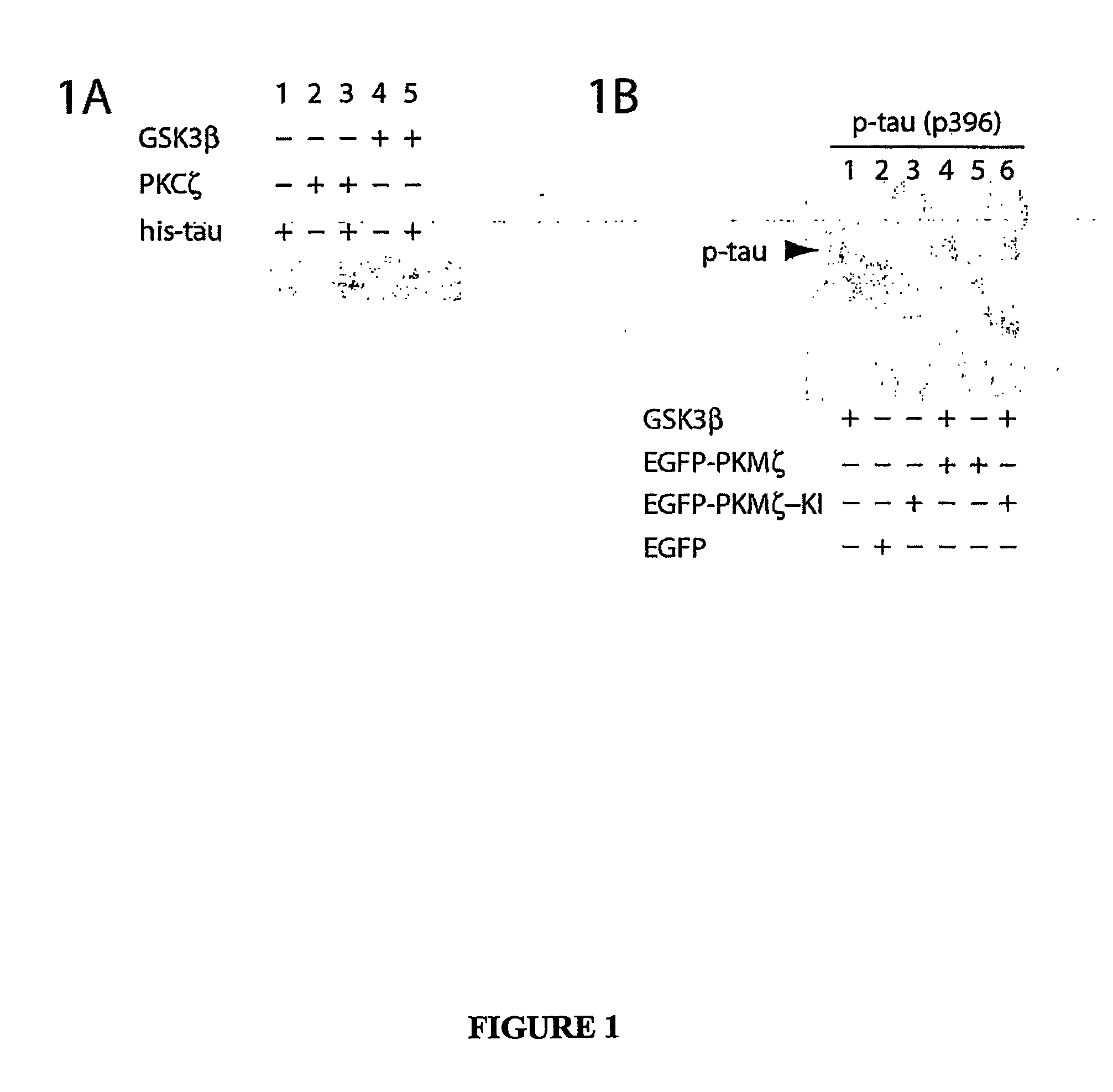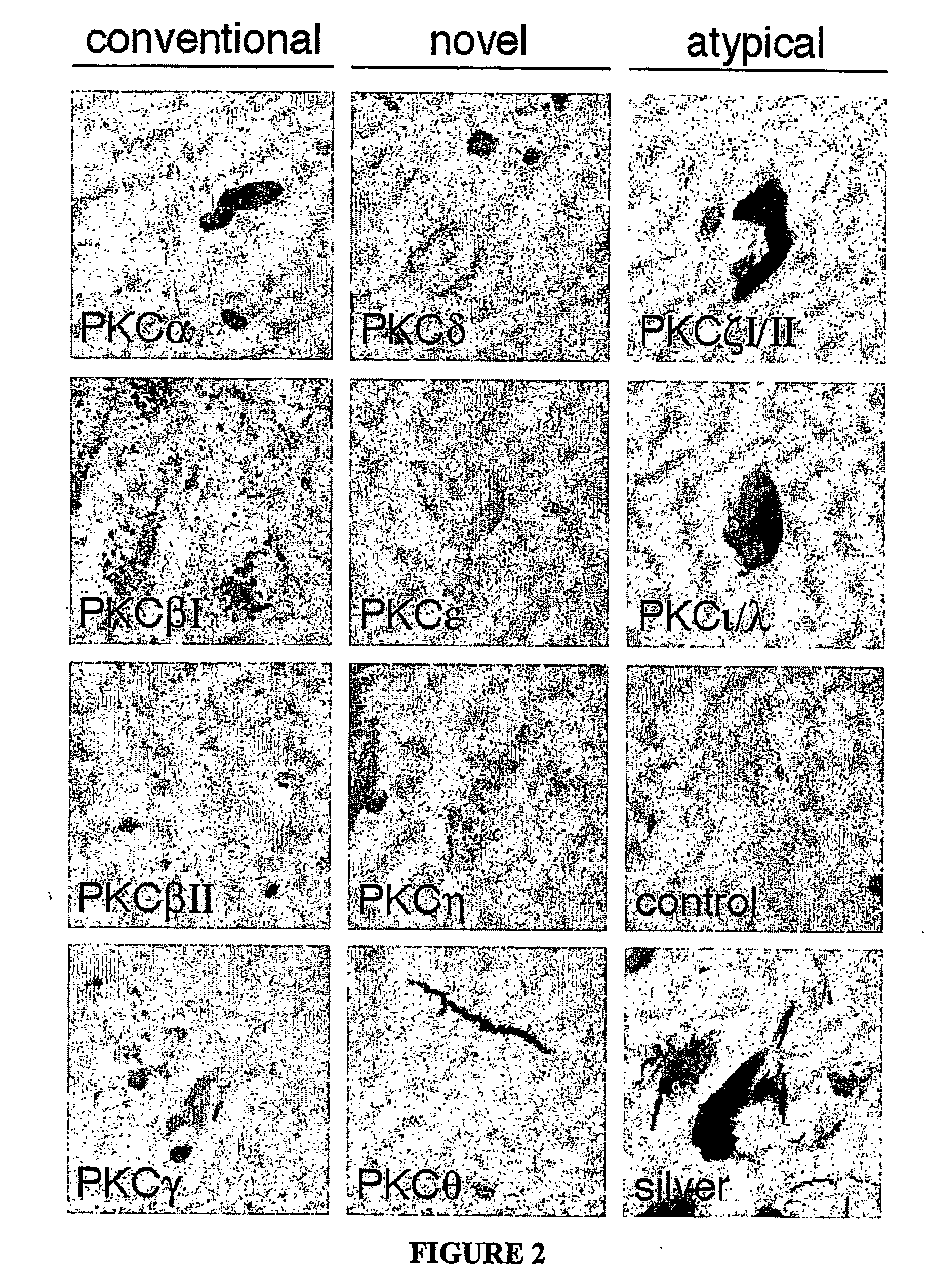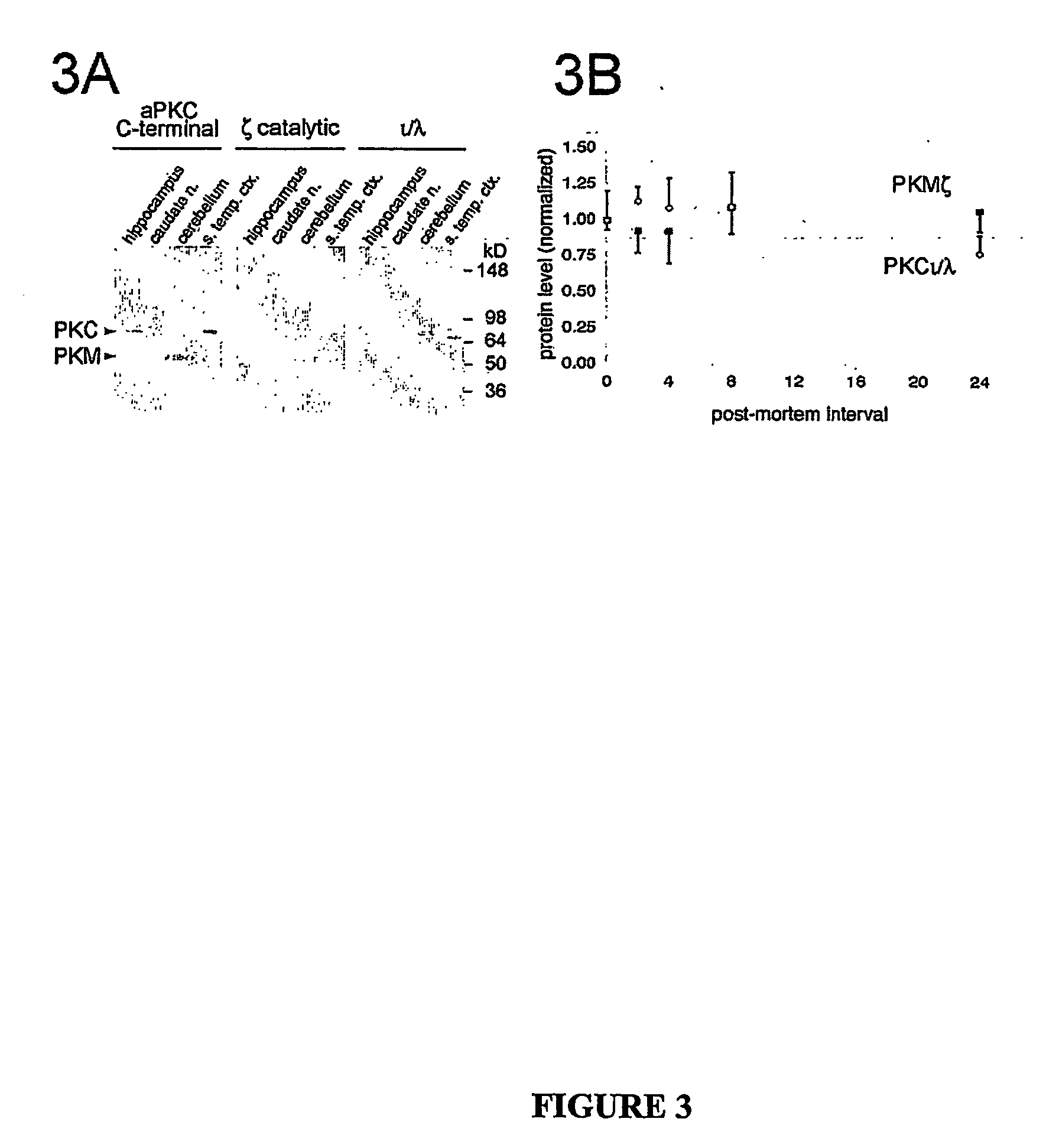Atypical protein kinase c isoforms in disorders of the nervous system and cancer
a technology of protein kinase and disorder of nervous system, applied in the field of atypical isoforms of protein kinase c, can solve the problems of abnormal posttranslational modification of gene products, neurological dysfunction and cancer, and cell polarity disruption,
- Summary
- Abstract
- Description
- Claims
- Application Information
AI Technical Summary
Benefits of technology
Problems solved by technology
Method used
Image
Examples
example 1
Production of PKC Isozyme Antisera
[0179] Peptides used as immunogens were synthesized by Quality Controlled Biochemicals (Hopkinton, MA) and corresponded to the amino-terminal (ζN1, TDPKMDRSGGRVRLKC, SEQ ID NO: 1), catalytic-domain (ζ-C2, TLPPFQPQITDDYGLC, SEQ ID NO: 2) or carboxyl-tenninal (ζ-C1, EYINPLLLSAEESV, SEQ ID NO: 3) of PKCζ. In addition, a terminal cysteine residue was added to each of the sequences for coupling purposes. The peptides were coupled to maleimide-activated bovine serum albumin (BSA, Pierce, Rockford, Ill.), according to the manufacturer's instructions. Peptide conjugates were mixed with Titermax (CytRx Corp., Norcross, GA) and injected intramuscularly into female New Zealand rabbits, one to three weeks of age. After three boosts at four-week intervals, the antisera were affinity-purified on Sulpholink gel columns (Pierce, Rockford, Ill.), to which the immunizing peptide had been conjugated according to the manufacturer's instructions. The antiserum to l / λ i...
example 2
Western Blot of AD Brain
[0180] Fresh frozen tissue from autopsy brain tissue derived from 4 neuropathologically confirmed cases of AD and 3 controls from individuals without neurological disease were homogenized in buffer containing protease inhibitors (50 mM HEPES, pH 7.5, 5 mM EDTA, 5 mM EGTA, 5 mM 2-mercaptoethanol, 0.1 mM phenylmethylsulfonyl fluoride, aprotinin (17 kallikrein units / ml), 5 mM benzamidine, 0.1 mM leupeptin) and phosphatase inhibitors (50 mM NaF, 40 mM β-glycerol phosphate, 10 mM pyrophosphate). Protein concentration was measured by Pierce assay. Sample buffer was added and samples boiled for 10 min. 15 μg of total protein was subjected to SDS-PAGE, transferred to nitrocellulose, and probed with specific anti-PKCζ and anti-PKCl / λ antibodies, and visualized by enhanced chemiluminescence (Amersham Biosciences, Freiburg, Germany).
example 3
Pathological Stains
[0181] Eight micron sections were cut from paraffin embedded tissue. All tissue was deparaffinized and rehydrated prior to use. For hematoxylin and eosin staining, sections were incubated in Gills hematoxylin for 5 minutes, rinsed in water, two changes, then dipped in bluing solution ten times and rinsed again. Next, sections were incubated in eosin Y for 4 minutes, dehydrated and coversliped. For Sevier-Munger silver staining, slides were incubated in 60° C. silver nitrate solution (20%) for 15 min. Slides were rinsed and placed in a clean dry staining jar. Slides were then developed in ammoniacal silver solution for 5 to 30 minutes. Sections were then rinsed 3 changes of water and incubated in 5% sodium thiosulfate for 2 minutes. Last, slides were washed with water, dehydrated, and cover-slipped.
PUM
| Property | Measurement | Unit |
|---|---|---|
| Fraction | aaaaa | aaaaa |
| Fraction | aaaaa | aaaaa |
| Nucleic acid sequence | aaaaa | aaaaa |
Abstract
Description
Claims
Application Information
 Login to View More
Login to View More - R&D
- Intellectual Property
- Life Sciences
- Materials
- Tech Scout
- Unparalleled Data Quality
- Higher Quality Content
- 60% Fewer Hallucinations
Browse by: Latest US Patents, China's latest patents, Technical Efficacy Thesaurus, Application Domain, Technology Topic, Popular Technical Reports.
© 2025 PatSnap. All rights reserved.Legal|Privacy policy|Modern Slavery Act Transparency Statement|Sitemap|About US| Contact US: help@patsnap.com



